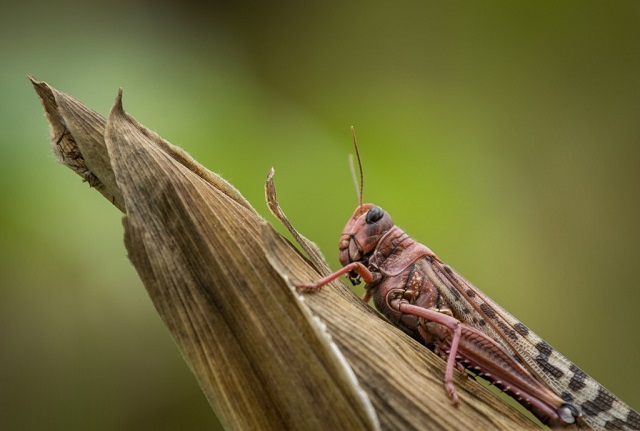
Kampala, Uganda | THE INDEPENDENT | Moroto district senior agriculture officer Mark Loli has warned that the area does not have the capacity to handle an incursion of desert locusts if it spreads to Uganda.
The warning comes just days after the Food and Agriculture Organisation-FAO announced that there could be a possible spillover of the crop-devouring insects into Uganda and parts of South Sudan after destroyed hundreds of thousands of acres of crops in Kenya, Ethiopia and Somalia.
FAO estimates that one locust invasion in Kenya covered around 2,400 square kilometres and contained up to 200 billion locusts which descend to feed off plants and vegetation.
The agency adds that this is by far the biggest swarm in decades and that if left unchecked, the numbers of could grow 500 fold by June 2020, spreading into Uganda and other East African counties. The locusts can move 150 kilometres a day devastating livelihoods in their relentless drive to eat and reproduce.
A statement by FAO added that although Uganda and South Sudan are not currently affected, they are at high risk. The fear that the large immature swarms were moving towards Turkana county, poses a great danger to the areas of Karamoja, in the North-Eastern region of Uganda, which shares a common border with Turkana county.
But the Ugandan side is ill-prepared for the possible tragic invasion, even though the region is reported to be on high alert. Loli, says that the production department of Moroto district has notified extension workers to closely monitor the situation and report to the district authorities for action.
Loli said much as the region has no crops on farms, the community should also keep keen attention to any incidence of the vegetation-destroying insects and report to the relevant authorities. He said the district will embark on community sensitization about the desert locusts and the potential damage they can cause.
Kotido, Abim and Kaabong districts are also on high alert in fear of a possible spillover to Uganda. Kotido District Production Officer Kennedy Okuda told URN that they are monitoring the situation on the spread of the locusts.
“We are following the reports closely and our extension workers have been alerted. At the moment, we have not received any report about locusts in the district but we have asked the community to report any outbreak even if on a low scale,” Okuda said.
According to the Associated Press News Agency, in Kenya, People have been seen shooting in the air, waving sticks, banging cans and running around trying to chase the locusts away.
On Friday, the Agriculture and Production officers across the sub-region engaged Mercy Corps, an NGO implementing livestock and livelihood programs in Karamoja to chat a way forward.
The meeting resolved to create community awareness on the identification of the desert locusts and agreed to promote reporting of information to the production department.
But residents within Moroto say that they had never heard about the insects and urged the government to act before the swarms make their way into Uganda.
“To be sincere I don’t know about those insects but I request the government to employ control measures so that they don’t reach here, said Anyapun Lotee of Nadunget sub county. This outbreak of desert locusts, considered the most dangerous species, has affected Somalia, Ethiopia, Sudan, Djibouti, Eritrea as well as Kenya.
The Intergovernmental Authority on Development, IGAD has warned that parts of South Africa and Uganda could equally be affected.
******
URN
 The Independent Uganda: You get the Truth we Pay the Price
The Independent Uganda: You get the Truth we Pay the Price


